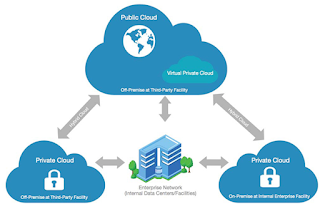What is SD-WAN (Software- Defined Network)?
Suppose you want to connect with the internet, to the outside world. How is the networking capability leveraged?
Through a Wide Area Network! In order to access the internet, any computing device needs to be connected to a WAN ( Wide Area Network). Whereas LANs (Local Area Networks) connect machines locally, WANs (Wide Area Networks) help machines communicate to the outside world. With the proliferation of the cloud environment, SD-WAN capabilities are becoming a necessity at many organizations. We will discuss the various capabilities of SD-WAN in this article series.
Traditional Network Architecture:
Image 1: Traditional WAN Architecture, Image Credits: Khan Academy
Traditionally, branch offices connect to data centers via MPLs or dedicated lease lines to request access on applications. Traffic was routed among branch locations and data centers via their addresses on data packets through TCP or IP Protocol. Routers managed the work of distribution of data packets among various locations.
This was a good architecture in itself. However, with the internet-based economy, SAAS based applications have proliferated the markets of today. Increasingly, most of the applications are software-driven and have cloud-based capabilities.
In simple words, most of the applications today can be accessed over the internet.
Some SAAS based examples are Salesforce, Dropbox, Gmail, etc, to name a few.
This means that there is no longer a need to request application from the data center when the application itself is sitting on the cloud and accessible over the internet!
So,
What was the need of SD-WAN?
Since applications are sitting on the internet, why not the branch offices access applications directly from the internet, rather than each time requesting information to Data Center?
If you were to access applications over the traditional MPLs/ Traditional WAN Network-
- You would unnecessarily add time delay, since branch office application request will be sent to a data center for using the application, and the data center will request an application over the internet or cloud. This could have been avoided, with the branch offices directly accessing the SAAS applications from Cloud
- There is an additional cost of investing in dedicated MPLs lines between each data center and a branch office for SAAS based applications. IT administration costs will also increase due to an increase in maintenance of the networking environment
- Lower business productivity due to large delays in accessing applications
So, what is SD-WAN?
“SD-WAN is an acronym for software-defined networking in a wide area network (WAN). SD-WAN simplifies the management and operation of a WAN by decoupling (separating) the networking hardware from its control mechanism”-Wikipedia
Image 2: SD-WAN Capability
Since SD-WAN separates network mechanism (WAN architecture) from its control mechanism (Routing Protocols and decisions), the routing decisions for each request can be made intelligently. No longer does a data packet or an application request from the Branch office need to Travel Back to the data center for it to be routed. Intelligence is added at the branch office location itself so that traffic can be routed across the WAN for the highest performance and efficiency outputs.
Stay tuned, in my next article, we will discuss Why and How an SD-WAN is better than a traditional WAN architecture.
General Technologies is helping organizations in their Digital Transformation Journey. For an SD-WAN consultation, Consider reaching us Here.



Comments
Post a Comment